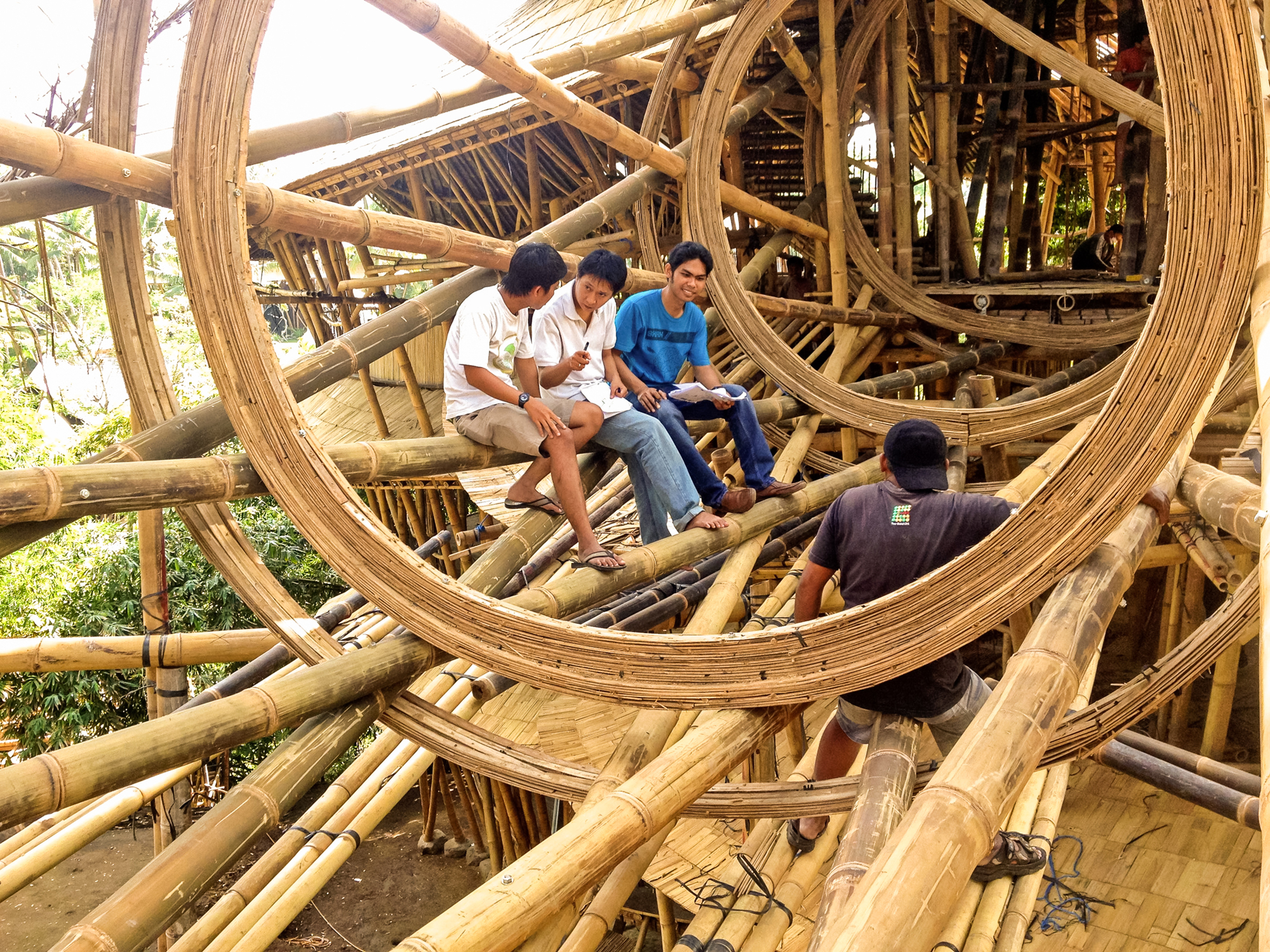Plunge into the deep Balinese jungle and you might suddenly find a bamboo building soaring above you. Made from the frankly unlikely building material, the ethereal structures are the brainchildren of designer Elora Hardy and her team at Ibuku (TED Talk: Magical houses, made of bamboo). The one-of-a-kind houses are curving, magical and utterly stunning. Take a look.

Six floors of bamboo home
Sharma Springs, a private home in Sibang Gede in Bali, has four bedrooms and stretches over six floors. It’s one of the tallest bamboo buildings in Bali; its design is intended to make you think of the petals of a lotus flower. Photo courtesy of Rio Helmi.

Intricate, interwoven bamboo
This fifteen-meter tunnel (shown under construction) leads into the ground-level entrance of the Sharma Springs home. Things can get very complex when building with bamboo. Photo courtesy of Ibuku.

Bamboo bridge in the jungle
23 meters long, the Millennium Bridge in Sibang Kaja is one of the largest bamboo bridges in Asia. It’s shown here under construction — sitting on top of the roof is no longer an option. Photo courtesy of Green School.

Watch the sun peek through the bamboo
This three-bedroom home, in Sibang Gede in Bali, was built in the shape of a leaf. It faces east, earning it the nickname “Sunrise House.” Photo courtesy of Rio Helmi.

Circles for doors
With a spectacular view out over the surrounding trees, Palm Villa in the Green Village boasts some unique design traits. “Why are doors so often rectangular?” asks Elora Hardy. “Why not have it pivot on the center where it can stay balanced?” Why not, indeed. Photo courtesy of Rio Helmi.

Now *this* is a meeting room
“This is the meeting room at our workshop in Bali,” says Elora Hardy. She’s now working to export the design elsewhere. “It has been designed to fit into a container and be assembled without skilled craftsmen.” (Cold-climate offices need not apply; the building is not insulated.) Photo courtesy of Agung Dwi.

A beautiful bamboo skeleton
Hardy’s team works from physical models rather than blueprints, because it’s difficult to adjust the software typically used by architects to account for the curves of the bamboo. Says Hardy, architecture students who come to work with her have to go through a process of “unlearning.” Photo courtesy of Ibuku.














